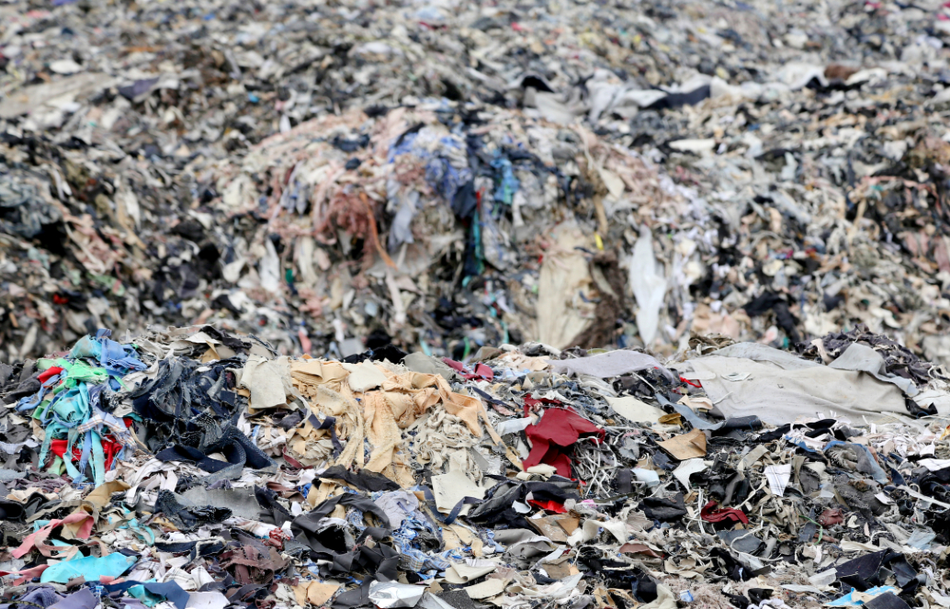
Image Credit: Swapan Photography/Shutterstock.com
The fashion sector has a significant influence on the European economy, claiming a turnover of approximately EUR 80 billion in 2018 alone. The EU has slowly comprehended the negative environmental impact the industry possesses and is currently facing an enduring pressure to make the global value chain sustainable and environmentally friendly. However, the level of awareness of the consumers is still at the initial phase as the EU exported approximately EUR 119 billion worth of clothes in 2018, which is close to a 35% increase compared to 2013.
The rise in the apparel export business reflects the actual high demand from the consumer, which in return attracts the SMEs to focus on mass production and sell at a low price, hence leading to fast fashion. Additionally, significant competition in the clothing business means the retailers tend to sell their products at even lower value, encouraging people to buy more clothes at attractive prices and eventually scrapping them to landfills or incineration once used.
In 2015, the global textile industry was responsible for 79 billion cubic meters of water, 1715 million tons of CO2 emissions and 92 million tons of waste with the prediction of at least a 50% increase by 2030 if no action is taken.
So, what is the solution? Eco-labelling enables transparency between the manufacturer and the customers interested in buying sustainable and green products. The concept of the circular economy should be endorsed, encouraging re-thinking and redesigning the technique of the current process, emphasizing the cradle-to-cradle process and reducing the waste generation as much as possible.
The Use of Circular economy strategy improvises the use of 3R strategy; (i) Reduce (ii) Reuse and (iii) Recycle. However, before implementing this concept, it is vital to "re-think" how harmful our actions are to humans and the environment. Subsequently, the 'Reduce' part encourages people to prefer recycled materials over virgin material and use less natural resources and hazardous substances. It also helps manufacturers to avoid dyeing fabrics where possible to reduce water consumption.
'Reuse' on the other hand refers to the possibility of using waste materials in the same system without further treatment. Finally, 'Recycle' looks into an opportunity to use waste material in different systems to make completely different products. The common aim, however, is to reduce the waste products and have less weight on the environmental impact. Switching to renewable energy and biodegradable materials are some of the popular options the textile industry could ponder upon at the current stage.
Magic of Raw Materials
Cotton is by far the most used natural fiber in the fashion industry. The hydrophilic material consists of around 99% cellulose. Being the purest of the cellulose, this material has a unique property of being more robust when wet and is extremely comfortable and soft, making it desirable to wear. Although this material has a tendency to wrinkle and is not resistant to acid, its quality can be strengthened by increasing the fiber length.
Another prevalent raw material is polyester, a hydrophobic synthetic polymer, which has a property to melt when heated and become solid again when cooled down. Hence, these polymers are typically processed by melt spinning at high temperatures, designed according to the needed length and thickness. Usually popular for being strong, durable and stretchable materials, they are easy to wash and resistant to chemicals.
Since different raw materials possess different preferable properties, single material fails in fulfilling the demand of the fashion industry, encouraging the industry to blend the fibers and use the best quality of each one. Playing around with 2-3 different fibers is beneficial in terms of desired properties and price, but they don't look promising in terms of sustainability and end-of-life scenario options.
Different fibers are produced from various resources and have different environmental impacts. Depending on how many different materials are involved in the production cycle, the disassembly and sorting during the recycling phase will need extra effort, which eventually means higher environmental and economic impacts.
What is the Future of the Fashion Industry?
The preference of the recycling process means the use of less energy than for the virgin raw material. Mechanical recycling of cotton is also possible and has the lowest environmental impact. However, this does lower the quality of the materials. Polyester is not as comfortable as cotton, although the fibers can possess properties as virgin material with chemical recycling5 that have a higher environmental impact in comparison to mechanical recycling.
Scientists are currently looking at some of the biodegradable and long-lasting fibers that are free of chemicals; Mycelium and Jellyfish. These fibers give the advantage of producing only the required amount and avoid energy-consuming processes such as spinning yarns and weaving.
Re-thinking and changing fashion from the beginning of the value chain and designing the whole system with new raw materials is indeed our next treasure hunt.
References and Further Reading
Disclaimer: The views expressed here are those of the author expressed in their private capacity and do not necessarily represent the views of AZoM.com Limited T/A AZoNetwork the owner and operator of this website. This disclaimer forms part of the Terms and conditions of use of this website.